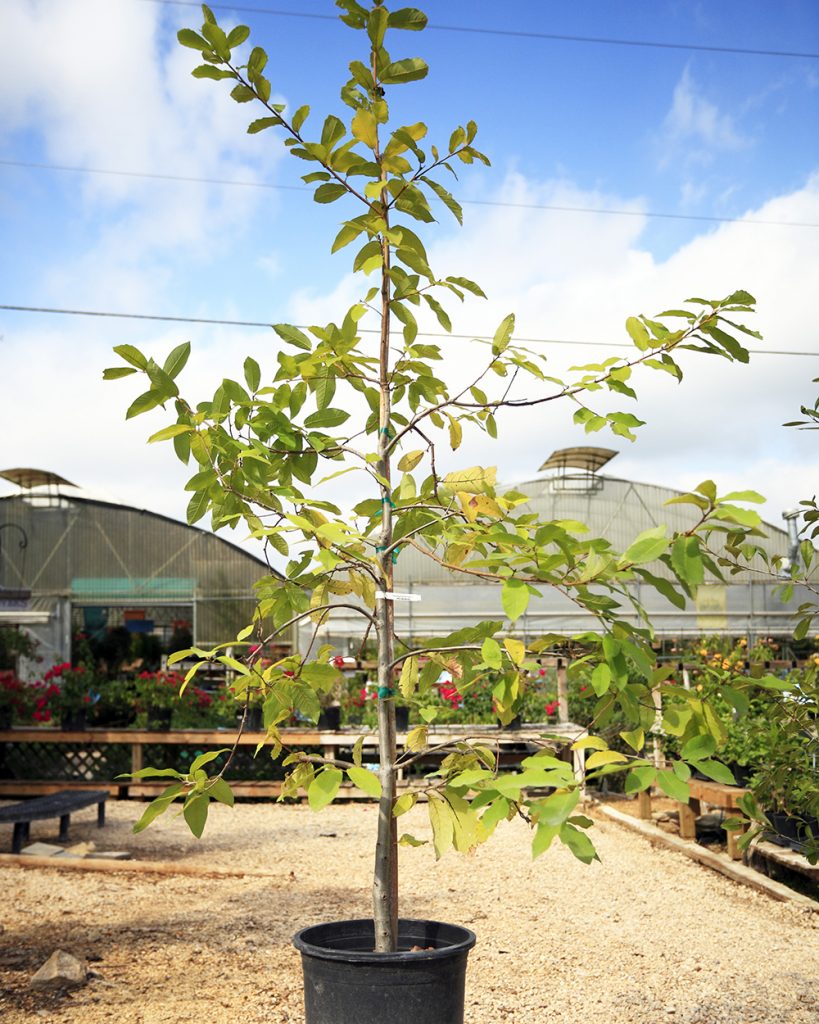Since the drought persists, it’s best to limit how much we plant and instead focus our attention on what we plant.
As mentioned before, fall and winter are perfect times to plant woody perennials, shrubs, and trees. But since the drought persists, it’s best to limit how many we plant and instead focus our attention on what we plant.
Species
I could go on at length about the various tree species appropriate to South Central Texas. But I’ll break them down into simple groups.
 Oaks – chinkapin, Monterrey, live, Texas red, Canby’s, and bur oak.
Oaks – chinkapin, Monterrey, live, Texas red, Canby’s, and bur oak.- Elms – cedar aka fall, lacebark elm.
- Other – Mexican sycamore, pecan (south of the Culebra and Hildebrand).
These species have proven themselves in nature and in the urban landscape by providing multiple benefits — including shade, pollution control, property value, carbon sequestration — and minimal maintenance.
Size
Research has traditionally indicated the best size tree to plant was a 1-½ inch diameter tree. This is still true. One and a half inches translates to a 5-gallon or 10-gallon container grown tree.
Placement
Location matters. Shade trees should be planted 15 to 25 feet from the house on the south and west sides. Research over the past 60 years demonstrates clearly that trees planted a moderate distance from a building on the southeast corner or the southern and west sides provide significant energy savings of 30 percent to 50 percent.
There is absolutely no evidence that tree roots significantly impact a house’s foundation. At the appropriate distance, a tree can maximize its growth but minimize required maintenance over its lifetime.
Planting
The wider the hole, the better. They should be two to three times the width of the transplant’s rootball. For example, a five-gallon container is typically 12-15 inches in diameter. That means the planting hole should be 24 to 36 inches wide. Correct tree planting procedures are covered extensively in our videos and galleries.
Establishment and maintenance
The key to establishing any plant involves frequent, but light targeted watering at first followed by infrequent and deep broad waterings — or as I like to call it, the 3-2-1 method.
This targets water over the rootball for three months and transitions to the rootball and surrounding backfill over the next six to 12 months. The most frequently asked question is how much water to apply to the rootball. A small amount of water over the root ball is all you need.
As for fertilizer, for trees this should be done in the fall (November) or late spring (May). But for grass and perennials, very rarely if you retain your grass clippings and add compost twice a year. A slow-release 3-1-2 ratio fertilizer is suggested.
Tree pruning is either done too often or too little. I recommend never removing more than 20 percent of the canopy once every five years. It simply doesn’t make sense to remove the very thing that produces all the food for a tree. The more leaves, the more food, the healthier the tree.


